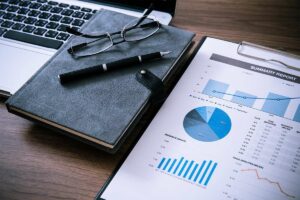
However, FAS 157 defines fair value as the price at which you would transfer a liability. In other words, the nonperformance that must be valued should incorporate the correct discount rate for an ongoing contract. An example would be to apply higher discount rate to the future cash flows to account for the credit risk above the stated interest rate. The Basis for Conclusions section has an extensive explanation of what was intended by the original statement with regards to nonperformance risk (paragraphs C40-C49).
Mark-To-Market Accounting vs. Historical Cost Accounting: What’s the difference?

If you invest in a mutual fund, the assets held by that mutual fund are marked to market at the end of every trading day. This is known as the mutual fund’s net asset value, and it’s the price you’ll pay for shares or receive when redeeming shares. Note that mutual funds’ prices do not fluctuate during the trading day, and purchases and redemptions mark to market accounting happen only at the end of the day after the funds assets are marked to market. The mark to market method can also be used in financial markets in order to show the current and fair market value of investments such as futures and mutual funds. It is used primarily to value financial assets and liabilities, which fluctuate in value.
Understanding Supplementary Schedules in Financial Reporting

Specifically, you’re looking at a security’s current trading price then making adjustments to value based on the trading price at the end of the trading day. • Mark to market accounting adjusts asset values based on current market conditions to estimate their potential sale value. • Mark to market is an accounting method used to determine the current value of assets based on market conditions.
THE POPULARITY OF DAY TRADING

Full market value accounting would require all assets and liabilities to be valued in a similar fashion. An increasing number of online brokers provide software and platforms for day traders, who can use margin loans from the brokerage to increase their buying power to sometimes three to four times their own equity capital. With the recent advent of Robinhood, one of the first online trading platforms to allow its retail clients to place trades with $0 commissions, day trading became accessible globally to the general population. The popularity of this pursuit has driven several traditional banks and brokerages to follow suit and offer commission-free trading to their retail clients in addition to a more expensive alternative that charges commissions for enhanced services.
This can have a boomerang effect and drive further economic decline, as it did in the 1930s when banks marked down assets following the 1929 stock market crash. In the latter method, however, the asset’s value is based on the amount that it may be https://www.bookstime.com/ exchanged for in the prevailing market conditions. However, the mark to market method may not always present the most accurate figure of the true value of an asset, especially during periods when the market is characterized by high volatility.
- But for assets with a lower degree of liquidity, such as inventory, business equipment, or real estate, obtaining the current value of the asset can be more difficult and require the services of an appraiser.
- However, the mark to market method may not always present the most accurate figure of the true value of an asset, especially during periods when the market is characterized by high volatility.
- Building a cash flow statement from scratch using a company income statement and balance sheet is one of the most fundamental finance exercises commonly used to test interns and full-time professionals at elite level finance firms.
- Your cash balance will increase or decrease based on the gains or losses reported for that day.
- Speaking to a qualified tax advisor can really help a business leverage legal strategies for financial success, without running afoul of tax law (or the SEC, if the business offers publicly traded securities).
Mark to market is, as discussed, an accounting method that’s used to calculate the current or real value of a company’s assets. Mark to market is a helpful principle to understand, especially if you’re interested in futures trading. Consider a situation wherein a farmer takes a short position in 10 rice futures contracts. It is done in order to hedge against the trend of falling commodity prices in the current markets. On April 9, 2009, FASB issued an official update to FAS 157[35] that eases the mark-to-market rules when the market is unsteady or inactive.

Real World Example of Mark-to-Market Losses
- The principal cause of the bank’s failure was its large holdings of long-term government bonds and securities.
- If these requirements are not met, the individual will be considered an investor, not a trader in securities whose trading activity is treated as a business.
- Liquidity means these assets can easily be bought and sold, and generally includes stocks, bonds, futures, and Treasury bills.
- A company that offers discounts to its customers in order to collect quickly on its accounts receivables (AR) will have to mark its AR to a lower value through the use of a contra asset account.
- In some sectors of the economy, it may even remain as one of the primary accounting methods.
- The goal is to provide time to time appraisals of the current financial situation of a company or institution.
The 2008 Financial Crisis

